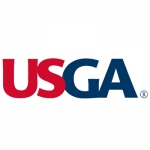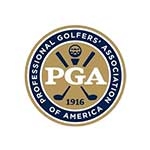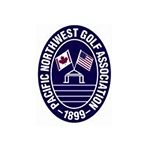Rule of the Month: Can I Really be Disqualified for That?
By Sr. Rules Officials: Pete Scholz and Terry McEvilly
Click Here for the Rule of the Month Archive
Happy New Year everyone. We hope that 2022 brings you health, wealth, happiness and wisdom. Now with the Hallmark moment out of the way, we also hope the coming year includes a better understanding of the Rules of Golf. Please continue to check the Rules tab on the OGA website for many educational opportunities, including this Rule of the Month feature and Rules workshops.
And while we don’t mean to start the year with a depressing topic but knowing when and why a player is disqualified is the first step to not being disqualified yourself. Test your knowledge on the Rules that involve a penalty of disqualification with the following questions.
Questions: True / False
- In a stroke play competition, after leaving a putt on the edge of a hole, one of the other players in the group says “that’s good”. The player picks the ball up without holing out and begins the play of the next hole. He or she is disqualified for failing to hole out. And the other player incurs no penalty for conceding a stroke in stroke play.
- A player is disqualified for playing a ball that has been deliberately altered by heating it.
- In stroke play, on a short par 3, two players hit over the green and into deep rough. Player A finds a ball and hits it onto the green. Player B searches for four minutes and finds his or her ball and also plays it onto the green. Both players hole out. Before teeing off at the next hole it is discovered that Player A holed out with a different ball than he or she played from the tee. To avoid disqualification, both players must correct the error of playing a wrong ball before making a stroke to begin the next hole.
- In a stroke play competition, player A tees his or her ball up a few inches in front of the tee markers and makes a stroke to begin the hole. In a different group, player B tees off from the blue tee markers when he or she should have played from the white forward tees. Both players complete the hole and begin the next hole. Player A is disqualified and player B receives two penalty strokes.
- In stroke play, a ball is struck toward an area containing deep rough and a red penalty area that is about 150 yards away. Unable to find the ball, the player uses the lateral relief option to take relief from the penalty area even though he or she didn’t have known or virtual certainty that the ball was lost in the penalty area. The player completes the hole and plays from the next teeing area. The player is disqualified for playing from a serious wrong place.
- Between the play of two holes, a player changed the playing characteristics of a club by adjusting the club-head to a different degree of loft. If the player uses the club to make a stroke that counts in his or her score, the player is disqualified unless the player returned the club-head to its original position before making the stroke.
- In stroke play, on the fourth hole, a player discovered that he or she has carried more than 14 clubs in the bag from the beginning of the round. The player adds two penalty strokes to his or her score on both the first and second holes, for a total of four penalty strokes. The player continues the round without any further discussion or actions regarding the extra clubs. The player has proceeded correctly and incurs no further penalty.
- In a stroke play competition, while waiting at the first tee to begin the round, a player stepped onto the nearby 18th putting green and made one practice putt. The player is disqualified for practicing on the course on the day before a stroke play competition.
- In both match play and stroke play, a player may be disqualified for misconduct.
- Starting Jan 1st 2022, a player is disqualified for making a stroke with a club, other than a putter, that is longer than 46 inches unless a Local Rule is in effect that allows longer clubs.
Answers:
- True. Rule 3.3c. In individual regular stroke play, every player must hole out at every hole and there are no concessions. Failure to hole out must be corrected before beginning another hole or if the error occurred on the last hole in the round, before returning his or her scorecard. If the error is not corrected before these two time frames, the player is disqualified.
- True. Rule 4.2a(2). This Rule with a penalty of disqualification is very clear, “A player must not make a stroke at a ball whose performance characteristics have been deliberately altered, such as by scuffing or heating the ball or by applying any substance (other than in cleaning it).” In other words, don’t try to gain an advantage by heating the ball.
- True. Rule 6.3c and definitions of Lost and Wrong Ball. Both players in this scenario have played wrong balls and incur two penalty strokes. This error must be corrected before teeing off at the next hole or before turning in scorecards if the error occurred on the last hole of the round.
- False. Rule 6.1b. Both players are disqualified for not correcting the error of playing from outside the teeing area. They both incur two stroke penalties and they must correct the error by playing from within the teeing area. The fact that one of the players lengthened the hole by playing from a longer set of tees is irrelevant.
- True. Rules 14.7 and 17.1c. This player has put a ball into play under a Rule that didn’t apply. By taking relief under Rule 17 for a ball lost in a penalty area when the player didn’t have known or virtual certainty that the ball was in the penalty area, he or she has played from a wrong place. The player was required to play under penalty of stroke and distance (spot of last stroke) for a lost ball and since the spot he or she played 150 yards forward of that spot, the player has a serious breach of playing from a wrong place. Not all breaches of playing from a wrong place must be corrected, but in this case, the player has gained a substantial advantage (serious breach) and must correct the error. Failure to do so, in the time frame mentioned in answer #1 results in disqualification of the player.
- True. Rule 4.1a(3). Once a player begins the round, no adjustment to a club may be made. One exception to this is when a club is damaged during the round, the player may then repair the club. In the situation presented, if the player realizes the breach before making a stroke with the adjusted club, he or she may return the club to its original position and then may use the club without penalty. Otherwise, if he or she makes a stroke with the adjusted club, the player is disqualified.
- False. Rule 4.1c. When a player is in breach of having too many clubs, besides adding the appropriate penalty strokes, he or she must immediately take an action the clearly indicates each club that is being taken out of play. Too satisfy this Rule, a player may tell another player or take an action such as placing the club upside down in the bag. Failure to do so results in disqualification.
- False. Rule 5.2b. This player has breached this Rule and receives two penalty strokes added to his or her first hole. Had the player made any additional practice strokes on the course before the round, he or she would be disqualified. See Rule 5.2 for a few exceptions.
- True. Rule 1.2 and Interpretation 1.2a/1. Every player is expected to play in the spirit of the game by conducting themselves with integrity, showing consideration of other players and taking good care of the course. Failure to do so puts the Committee in charge of the competition in a tough spot as it will need to decide if the actions of the player are serious and warrant disqualification of the player.
- False. Model Local Rule G-10. This is a bit of a trick question as the R&A and the USGA recently released a new Local Rule that prohibits the use of a club, other than a putter, that is longer than 46 inches. It is suggested that this Local Rule be used primarily for professional and elite amateur competitions. However, before beginning play in your club championships, carefully read the Conditions of Competition and the Notice to Players. Using such a club when not allowed will result in disqualification of the player.








